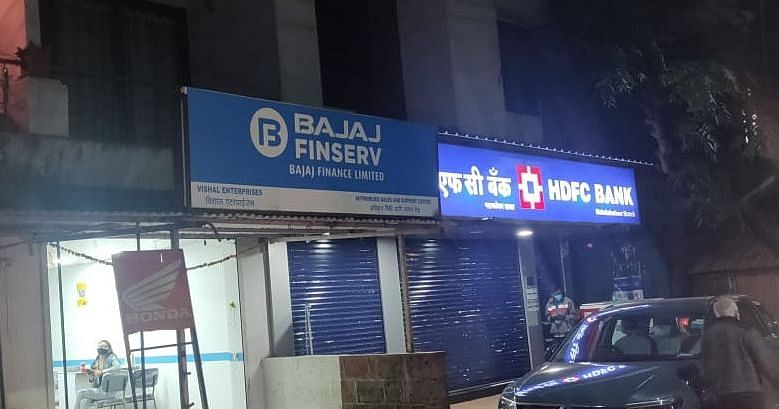One thing caught my eye in your Q3 earnings release and that is the kind of churn or attrition you’ve seen in your mortgage portfolio.
Mortgages disbursement was at 90% of Q3 FY20 level. However, AUM growth for the quarter was Rs 770 crore as against Rs 3,700 crore in Q3 FY20 due to significant portfolio attrition caused by pricing pressures.
In a very low interest rate scenario, do NBFCs still have an incredible, competitive edge?
Sanjiv Bajaj: That’s a good question and that’s why the answer to that is – what is the differentiation that an NBFC brings to a particular line of business versus a bank. If it’s only going to be interest rate arbitrage, then when banks get into those lines of business it will get really tough for an NBFC. Now look at it this way, HDFC Limited is an NBFC, but it is the largest home financier competing with banks since inception. So, it’s not that you can’t build a differentiation but there are enough NBFCs that don’t focus on building the differentiation, that don’t focus on the customer service, they don’t focus on the uniqueness of their product or service and they are the ones that will get hit. Because as it is obvious in the last few months, banks are not able to extend credit to most of the other lines of business. So as a result, they’re going after some of the retail lines and they would cut rates more than most of the other NBFCs.
You said you will be taking “pricing actions to revert to pre-COVID growth levels by Q4/Q1”. So it’s a race to the bottom right now?
Sanjiv Bajaj: Not really, in our case i none of our lines of business are we the lowest interest rate service provider but it does not mean that you don’t stay within the range of interest rates at which a good quality customer will come to you. Otherwise, you will get adverse selection. So, when we see rates falling, we will also partly cut our rate but on the other hand there are a lot more intelligent, things that you can do to ensure that your book still stays not only of good quality and reasonably growing, but profitable as well. And I can’t let out all the secrets.
Bad loans or Gross NPA ratio would have been 2.86% in Q3 if the Supreme Court status quo had been lifted, versus 1.34% in the preceding quarter. That’s an almost doubling of bad loans. Does it get much worse from here on?
Sanjiv Bajaj: Hopefully not. As long as the pandemic does not throw up any nasty surprises, I would expect the worst to be behind us. As a company, we are very driven by the numbers that we see and that’s why we are very transparent in sharing those numbers so that our investors can make their own calls. But as of now things are looking better than what we had expected. We were very conservative early on, we cut growth, we upped our collection efforts, we gave moratorium to customers that wanted it.
The good thing that we are seeing is that other than a small segment of customers who went through a tough period, and they are the ones that are contributing to the higher losses, many others have started coming back and paying. And new loans that we have given, the book that didn’t exist prior to Covid, that book is operating at the same quality level as the pre-Covid book.
Which means inherently, we are still in a country where people want to pay, they are honest. Some of them have gone through a terrible time and we are part of the system that will have to absorb some of those losses, like the government is taking some, the individual is taking some, the financial services have to take the rest. But, incrementally, as of now, things are looking better.
So, bad loans are peaking out at 2.83 or 3% or so…nothing beyond that?
Sanjiv Bajaj: That’s what it looks like as of now.
Your consolidated assets under management – AUM levels – are just about back to the December 2019 levels. You’re roughly at Rs 1.43 lakh crore versus Rs 1.45 lakh crore. From here on what kind of growth do you intend to pursue? Because in the last 12 months, even pre-Covid, you had consciously cut back on growth, on lending. Here on, what kind of growth do you think you might be able to chase in the next 6 to 12 months?
Sanjiv Bajaj: That’s a little early to say that right now. I think by the end of Q4, we should be in a much better position to be able to talk about growth for the next year. Right now, we’re still in a situation where we are coming close to normal. As I told you first quarter next year (FY22 Q1), we should be at a normalised level of volume compared to pre-Covid times. I guess right now there’s still too many moving parts, but hopefully by the end of Q4, we should have a better sense.
Since we last spoke there have been two interesting RBI papers. One is an internal working group paper that recommends the opening up of banking licenses to business groups, like yours maybe. The second is a discussion paper by RBI on NBFC regulation. Not too many surprises there except that some of the things we’ve discussed in the past are not necessarily in the paper. Could you share your views on both?
Sanjiv Bajaj: The second one – as far as on the supervision, regulatory side, from what I’ve seen of this paper it’s been quite pragmatic and balanced. There are certain details on formulae based on that classification which when it comes out we will have a better sense. But directionally it is the correct thing to do.
